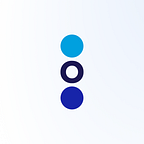UX Design for Fintech
By: Rodrigo Cano, Diseñador UX/UI Senior
UX design is the process of understanding users, considering their expectations, the state of the market and the unconscious cognitive processes they possess. Working for a financial technology company adds the additional challenge of having to design these products considering the compliance requirements and transparency needed to help our end users make the best decisions. The challenge was clear and present, designing a world class modular credit platform was a large task that was going to require the most innovative ideas and expertise of our team.
Introducing a User Experience design pipeline into an existing product is a challenging prospect for any company wanting to dramatically improve the performance of a product with its users. BOWPI’s main priority is providing value to all stages of a lending operation’s value chain, through a robust system of intelligent models that enable the lender to precisely choose the right people to grant credits to and applying user research to build those models into products that have their user at the center and empower all kinds of users to conduct their work in the most efficient and delightful manner.
As BOWPI’s User Experience architect, understanding the Lending as a Service market space was the key first step towards designing meaningful experiences. After conducting a benchmarking process analyzing the best practices implemented by leading companies, we designed requirements for the desired functionality in these distinct modules that comprise our solution. We iterated starting by using information architecture principles to classify the information we require from our end users into screen layouts that were validated by implementing a Card Sorting methodology on a panel of users that represented the breadth of clients for BOWPI.
After having a clear understanding of the structure these users expected to streamline their credit application process, we started working on building a robust design system that could be handed off to developers to dramatically accelerate our implementation time. As a white label application, BOWPI had to be distinguished from other products through a design language that could be adapted to any of our client’s brand identities, so the design system had to reflect this versatility. We began the process by defining our tokens (typography, colors, inputs, states) that were validated for accessibility by employing the WCAG standard. They were later tested on users to review their clarity and legibility across the different screens that BOWPI’s products can inhabit.
After building the design system and having these flows already in place we began to iterate on prototyping the flows and utilizing Figma’s interactive prototyping features to create flows that we could use to conduct user testing processes on. These flows had to consider the possible states and errors that inevitably happen on digital products as well as be able to address them in a predictable manner for the user. We designed specific task flows to conduct testing by using remote unmoderated testing tools and later observing our users through zoom calls as we had to adapt to a fully remote environment as the pandemic forbade being able to conduct this research alongside our users.
After conducting these distinct tests like a First Click test, A/B tests for distinct layouts and setting specific tasks for users to accomplish in our distinct modules we reviewed the results and while mostly positive, we had some learning to do. Applying that knowledge to improve upon our prototypes was key to assuring our clients we had produced the best possible flows according to their requirements. We rebuilt some components, created new ones, added more visual hierarchy and iconography to create an initial definitive version of the modules we had worked on.
The final stage of a User Experience design process is assuring we are providing our developers with everything they could need to build the interfaces our team designed. We worked closely with front end and mobile developers throughout the entire product design process, and they were prepared to use our prototyping tools to extract visual assets and the down-to-the-pixel specifications of our components applied to the screens. After finalizing development, we conduct quality assurance evaluations using the prototypes as a checklist of how the module should look like.
The entire product design methodologies applied to BOWPI’s products accompanied by a team of developers up to date with the latest code patterns and architecture alongside advanced machine learning models have created a product suite that is beyond the current market and ready to face the future. The learning process has been steep, and we have risen to the challenge of making a product suite that can redefine and challenge what a modern credit process can look like for our clients.
